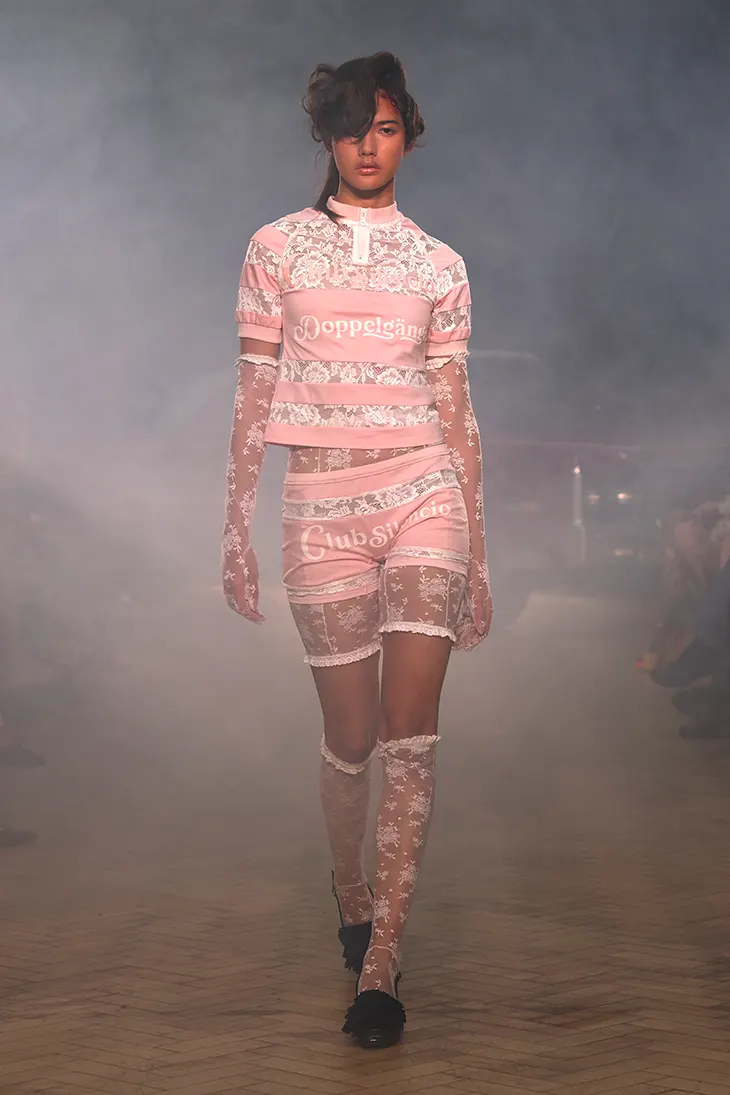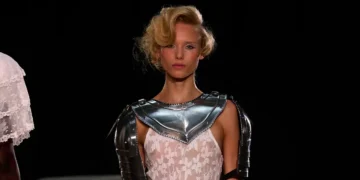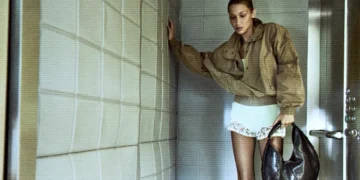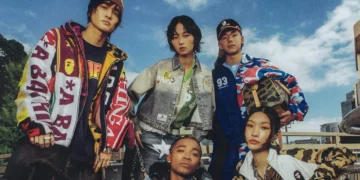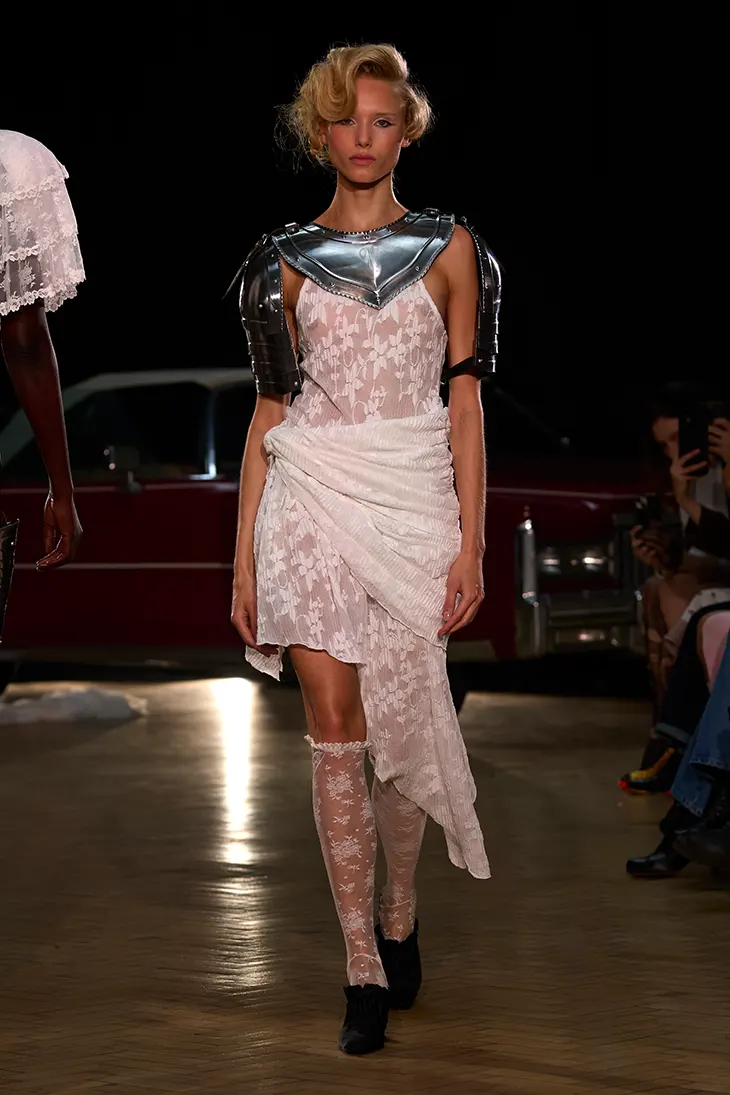
Yuhan Wang introduced her Spring Summer 2026 collection, Armor of Roses, as a meditation on fractured identity and feminine resilience. She drew inspiration from the shifting realities in David Lynch’s Mulholland Drive, where desire and despair intermingle and women are often trapped within narratives authored by others. Wang redirected this atmosphere into a narrative where her heroine takes control, choosing beauty as both protection and expression of defiance.
Armor served as her central device. Traditionally linked with masculine codes of defense, Wang reshaped it through materials and motifs associated with softness. Lace cut into structured forms, metallic finishes paired with jersey, and roses layered onto protective silhouettes conveyed a tension between vulnerability and strength. A black gown scattered with crystal constellations evoked the Los Angeles skyline, turning Hollywood’s glittering horizon into a stage reclaimed for women’s self-authorship.

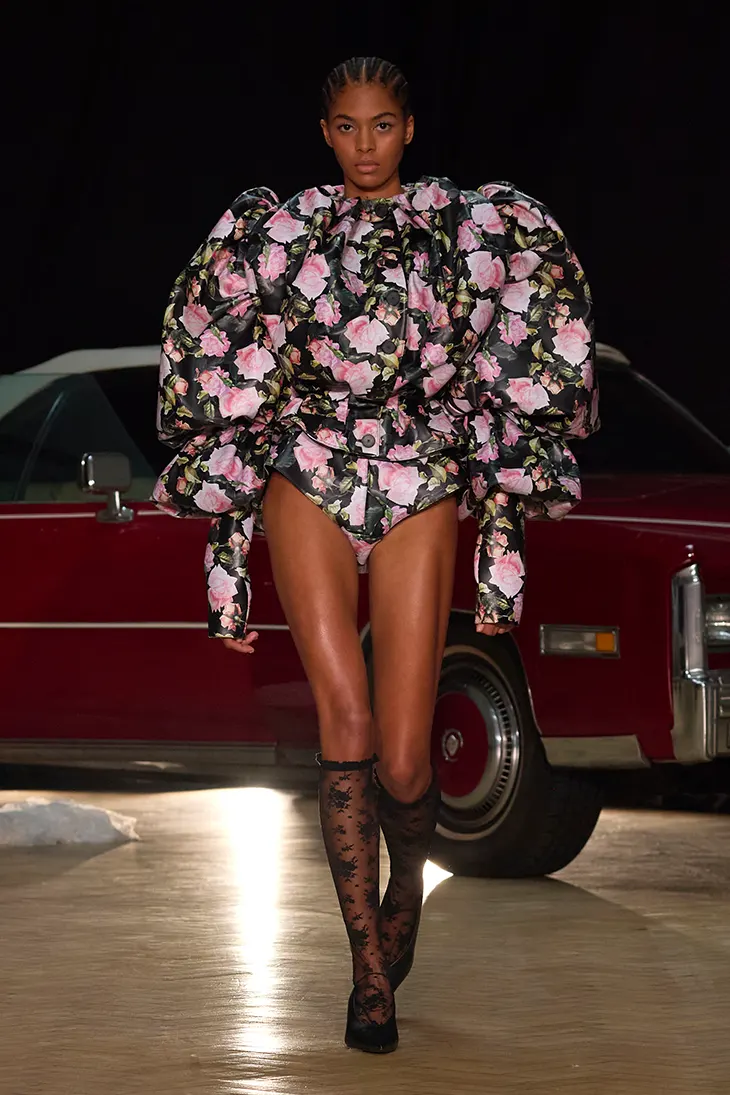
The show moved between casual references and cinematic grandeur. Wang tapped into early-2000s Los Angeles for relaxed silhouettes while also channeling mid-century glamour for eveningwear. The collection sustained a push and pull between ease and spectacle, as everyday clothing rubbed against dramatic flourishes. Recurring symbols deepened the narrative: blue dice invoked chance, roses resurfaced in vintage-style prints, and porcelain dolls transformed fragility into resistance. References to Club Silencio and the figure of the Doppelgänger appeared through prints and spliced textiles, as lace and jersey collided to expose the duality of softness and severity, ordinary and extraordinary.
Sustainability remained integral to Wang’s practice. She sourced deadstock fabrics, cut and repurposed them into new forms, and unraveled lace remnants to respin them as knitwear. Scraps left from production gained new life through patchwork construction, building garments that carried fragments of past use.
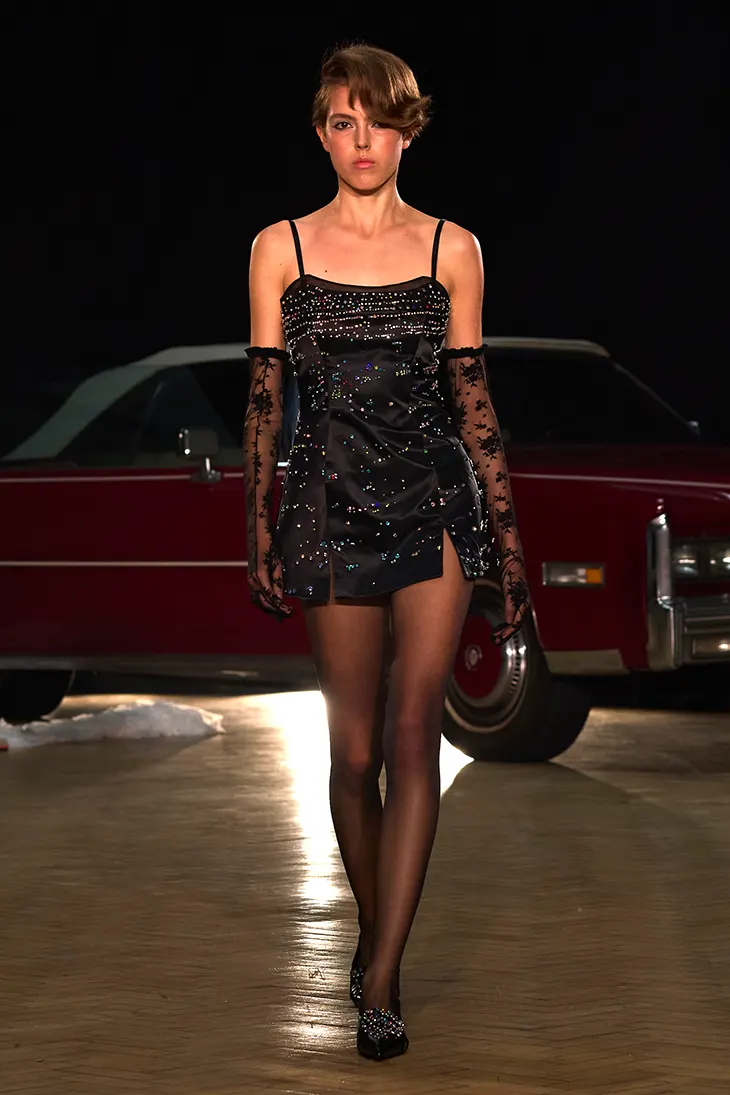
Wang’s roses defined the spirit of the collection. They appeared as the armor itself, stitched into surfaces that suggested protection without erasing delicacy. This inversion presented a powerful thesis: strength need not shed vulnerability but can arise directly from it. The roses, crystals, lace, and jersey became symbols of contradiction embraced and turned into design.
Armor of Roses framed femininity as both luminous and unyielding. Wang delivered clothing that challenged the divide between fragility and force, beauty and defense. In her SS26 collection, she created a narrative where women refuse to play characters imposed on them, instead writing their own scripts through garments that protect, confront, and seduce in equal measure.
